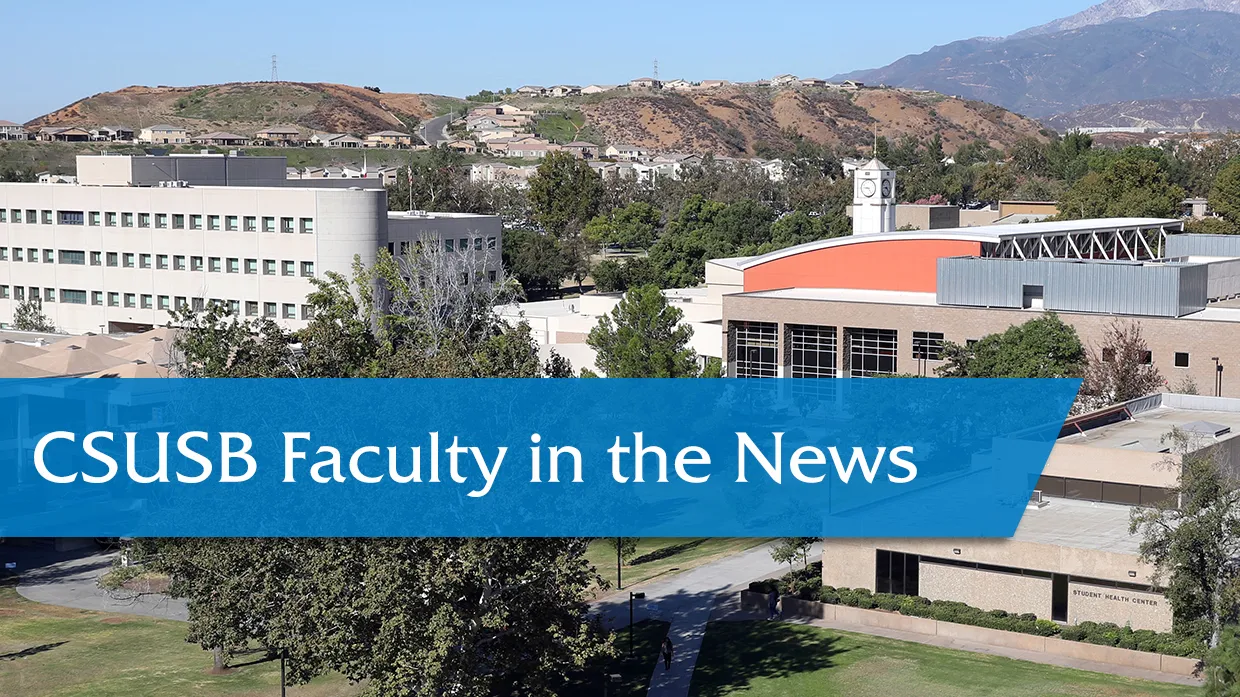NOTE: Faculty, if you are interviewed and quoted by news media, or if your work has been cited, and you have an online link to the article or video, please let us know. Contact us at news@csusb.edu.
Artwork by inmates in CSUSB’s Prison Arts Collective on display at California State CapitolCorrections.comJan. 18, 2019 Demonstrating that creativity can flourish even during confinement, artworks by California inmates are on display at the California State Capitol through Jan. 25 outside the Governor’s Office in the annex hallway. The exhibit, “Beyond the Blue,” features 15 diverse artworks evoking the prison experience, personal expression and transformation. The artworks were created by students participating in rehabilitative Prison Arts Collective (PAC) classes taught inside state prisons. PAC, founded by Annie Buckley, a professor of visual studies at California State University, San Bernardino, is made possible by a contract through California Arts in Corrections, a partnership between the California Department of Corrections and Rehabilitation and the California Arts Council. “Art has the capacity that no other medium has to allow people to access their own personal voice and experience,” Buckley said. “Even if they can’t identify their issues verbally, they can express it in paint and collage. Often it’s the first step to understanding, self-acceptance and healing.” Read the complete article at “Inmate artworks on display at California state Capitol.”
CSUSB professor comments on significance of latest research on a fossil he discovered in 2000 Scientific AmericanJan. 17, 2019 Paleontologist Stuart Sumida of California State University, San Bernardino was interviewed about the significance of the latest research on how Orobates pabsti, a crocodile-like animal that lived 290-million years ago, may have moved in its habitat. John Nyakatura of Humboldt University of Berlin and his colleagues “have gotten us as close as we can get without a time machine” to knowing how Orobates walked, says Sumida, an expert on Permian tetrapods who was not involved in the new study. Sumida—who discovered Orobates in 2000—notes it is not the only animal to hint at locomotor diversity among early terrestrial tetrapods. He and his colleagues have shown another animal from the same fossil locality in Germany, Eudibamus cursoris, could run on two legs. “The range of locomotor capabilities of animals leading to [modern amniotes and their relatives] is much greater than we thought,” Sumida says. And if this experimentation began as far back as 290 million years ago, that could shift researchers’ understanding of the rise of the amniotes. “It might have been more gradual,” he adds. Read the complete article at “RoboFossil reveals locomotion of beast from deep time.”
CSUSB professor comments on Arizona’s anti-terrorism lawArizona RepublicJan. 18, 2019 The newspaper interviewed Brian Levin, a professor and director for the Center for the Study of Hate & Extremism at California State University, San Bernardino, for an article about Arizona's terrorism law, regarded among the nation's broadest, allowing for charges even in instances in which someone has no real connection to a terrorist organization. Levin said laws similar to Arizona's anti-terrorism statute exist in other states. But, he said, what makes Arizona's law unique is that prosecutors don't have to show that a suspect committed an “overt act” to prove terrorism conspiracy. In contrast, federal prosecutors would have to show evidence that a person purchased a weapon or explosive. Arizona's law requires only evidence of intent, such as an agreement between the suspect and another person, Levin said. It could also be someone simply posting a terrorist threat on social media without ever having contacted a terror organization. Profiles for people who get charged with state-level anti-terrorism acts vary, he said. But Americans involved in such things usually connect with extremist groups via the internet or social media groups, Levin said. 'We have three types of offender who are involved in the act of symbolic violence,' he said. He said they are:
- The ideologically motivated offender who seeks to commit violence for religious and/or political reasons.
- People who are mentally or emotionally unstable.
- People seeking personal benefit, such as to enhance their social status, or revenge.
Read the complete article at “Sheriff's Office, FBI refuse to provide details about 'home-grown violent extremist.'”
Biography by CSUSB professor included in obituary for Father Patricio Guillen, who supported immigrants’ rightsFontana Herald NewsJan. 17, 2019 Father Patricio Guillen, an activist who supported immigrants’ rights in Southern California, and especially in the Inland Empire, passed away this week, family members announced. Guillen, who founded Libreria del Pueblo, a community-based nonprofit organization that educates, empowers, informs and protects the immigrant community, was 89. According to a biography written by Cal State San Bernardino Professor Enrique Murillo in 2016, when Guillen served as the Latino Education and Advocacy Days (LEAD) Summit Padrino de Honor, Guillen was born in 1929 in Bellflower. He was the eighth child out of 10 children born to Patricio Guillen Zendejas and Juana Santoya Castorena, both Mexican immigrants. Read the complete article at “Father Patricio Guillen, who supported immigrants’ rights, dies at age 89.”
These news clips and others may be found “In the Headlines” at inside.csusb.edu.
